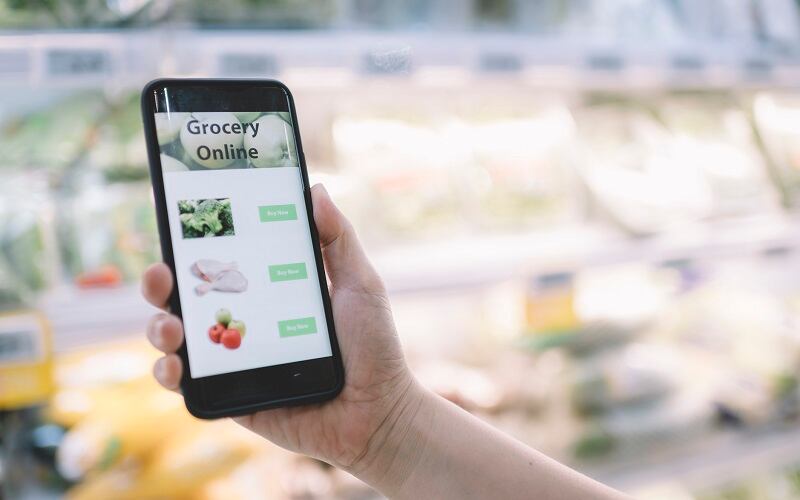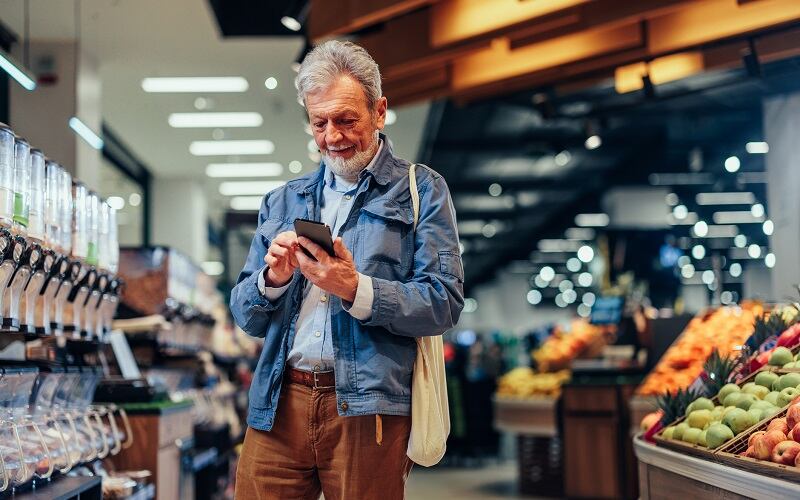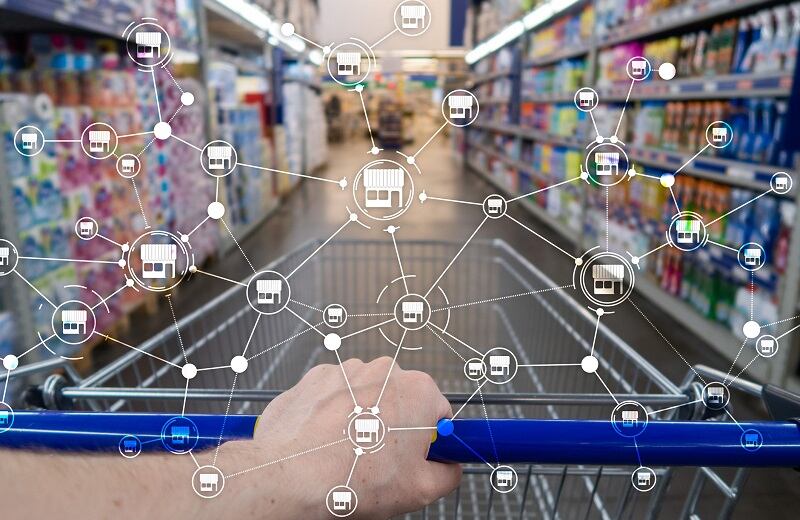“The challenge of online grocery is it's a trade-off with time for money. You're spending more money to have someone else do the grocery shopping for you and which one wins out for the consumer. We know in the pandemic it was definitely a question of time. We know the earlier inflationary period, it was the question of money won out, and I think we're shifting back again, and my sense is time is going to start winning out again.”
Gen Z consumers push back on digital
While the online grocery channel is currently facing some challenging macroeconomic factors, more consumers today are shopping online, and the channel will be the key growth channel for retailers in the year come, Barry shared. Overall, 26% of American adults are major users of online grocery shopping service as of 2022, where only 13% of consumers were buying groceries online pre-pandemic, Euromonitor reported.
Looking at the overall market, US-tracked online food and beverage sales came in at $75.8bn, with package foods accounting for $48.8bn of those dollars, soft drinks at $9.6bn, fresh food at $9.4bn, and hot drinks at $5.1bn, according to Euromonitor data, ending July 11, 2023. And as demand for online grocery services increases again, this will propel the market forward, with Euromonitor estimating that the market will be $100bn by 2027.
Baby boomers, lower income, and women were less likely to buy groceries online based on the weekly average over more socio-economic advantaged consumers and those that have children, Euromonitor reported. While younger generations tend to do more online grocery shopping, "there's actually a decrease on Gen Z a little bit, which goes against the narrative; the narrative is always about Gen Z are tech native, and they love it," he added.
Barry noted that younger consumers are having “more skepticism on tech ... especially profit-driven tech.” Gen Z consumers have become savvier on understanding how their data is being used and have a greater distrust of technology due to fake news and cybersecurity concerns, he added.
“There's a sense that these companies are ... offering these tools, [but] it's not just to give you a better offer on bread. It's also getting data on you, and they probably sell it,” Barry said. “A lot of Gen Z is saying 'Hey, do I really want this right? Am I really getting an extra value?' ... And I think we need to be careful about that with this new tech that the consumer we’re all counting on may not want this.”
Amazon, Walmart set to battle over consumer trust online
Consumers are turning to two main retailers -- Walmart and Amazon -- for their online grocery shopping, Barry said.
“It's an overall US grocery battle, but the online is the really most competitive part right now. And that's fascinating that Amazon, which in a lot of areas is the definitive online retailer, can’t get an edge on Walmart.”
Though each of the online retailers has their strengths and weakness, in “a lot of areas, it's very clear where Walmart just has a very strong edge on [Amazon],” Barry said. Part of the reason for Walmart’s success comes from its vast network of stores, and consumers are more familiar with their local store, he added.
“If you're ordering especially perishable, you know the Walmart's right there, whereas you don’t know [where] Amazon's warehouses ... are exactly, and the Whole Foods [is of] course not same penetration."
However, Amazon sells more snacks and hot drinks, Barry said. Not only are products in these categories smaller, lightweight and easy to ship, variety is a good thing for them where it could be a hindrance to perishable items, he said. “You don't really need 100 types of bananas, ... but 100 types of candy might be interesting,” he added.
As both retailers reach for a bigger piece of the growing online grocery channel, they both need to focus on building trust with consumes so that they feel comfortable using digital tools to order everything from snacks to fresh produce, Barry said.
“Trust is so important in grocery. There's a hierarchy of 'here are categories which I'm okay with offloading my choice to someone else, [and] here are categories which I'm just not.' You see especially the fresh categories [are] way under-indexed online because there's not that same trust. I can trust someone to buy a box of cereal for me online; all cereals basically look the same. But making them buy my produce, my meats, my fresh bakery goods, that's another level of trust, and that's a lot harder to get consumers to do.”




![[Video] 84.51° director of insight shares thoughts on e-commerce evolution from COVID to now](https://www.foodnavigator-usa.com/resizer/v2/NVUNTYYUL5MZZEANXBVV77NXN4.png?auth=d65ba086a590a9479e8b8eab9dccf0f5d08acfa4cf859c084cfa2f074d396570&smart=true)
